Snails make wonderful pets, especially if you’re looking for an extraordinary animal that won’t take much time, money, and effort to care for.
Just because they’re low maintenance doesn’t mean you can feed them whatever crosses your mind, however. Snails aren’t vacuum cleaners that can gobble up just about anything; you need to feed them food that’s appropriate for them.
But what do snails eat?
Before we get to that, let’s discuss a few important things about snails.
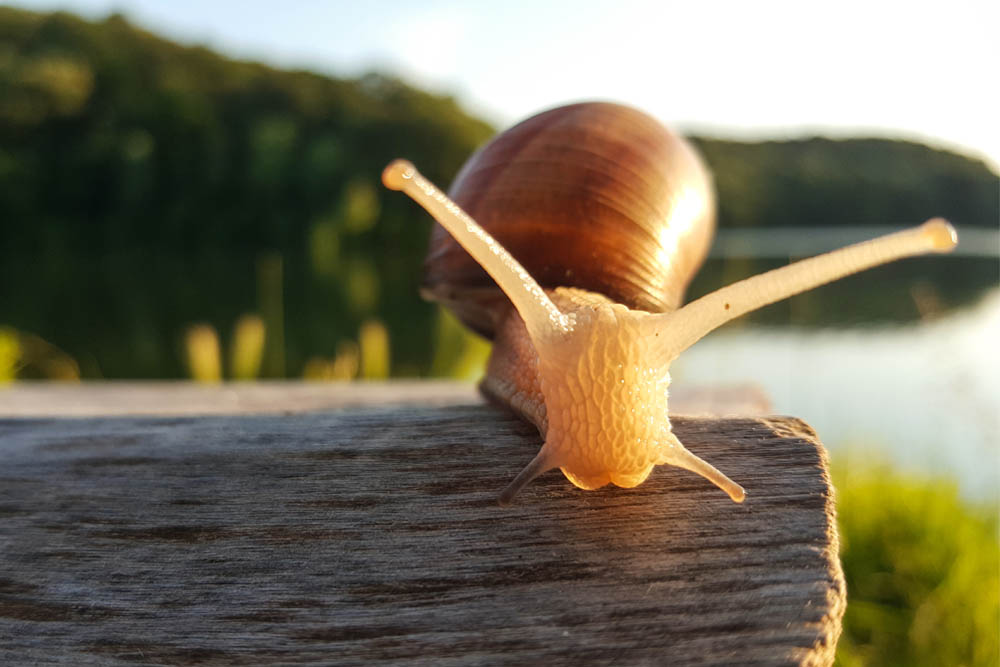
The 3 Main Types of Snails
While thousands of snail species can be found all over the world, they can be categorized into three major types: those that live on land (land snails), those that live in the sea (sea/saltwater snails), and those that live in bodies of fresh water such as rivers and lakes (freshwater snails). Where a snail is located determines the kind of food it eats.
Most snails are herbivorous, meaning their diet consists solely of plant matter such as fruits, vegetables, and leaves. Some are omnivorous in that they consume both plant matter and meat. There are even carnivorous snails that feed on meat exclusively.
As most pet snails are land snails, this article will focus primarily on what land snails consume.
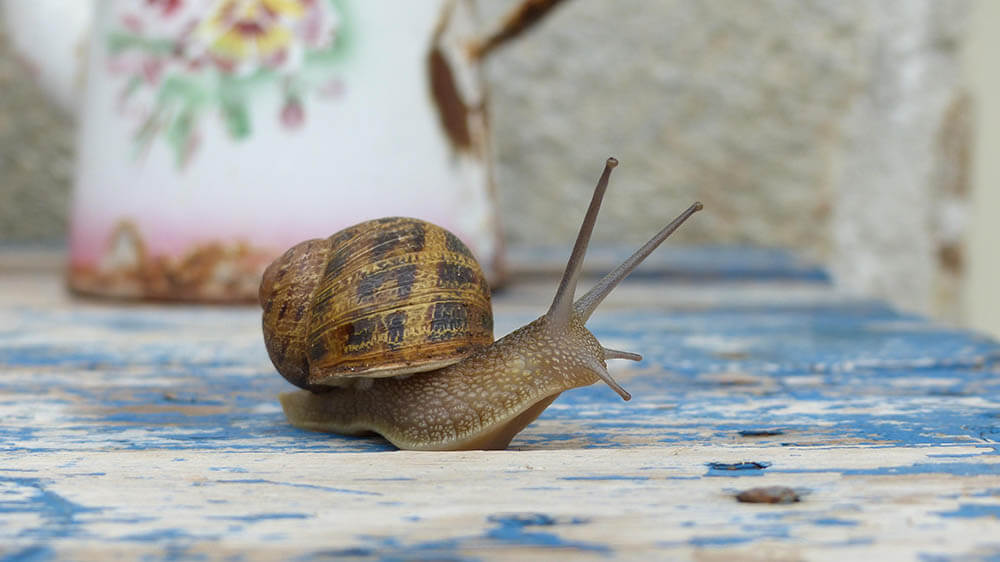
The Land Snail Diet
First things first, you should know that feeding snails is easy. They don’t eat much, they aren’t too picky with their edibles, and the food they eat is generally easy to find and inexpensive.
Foods to feed your pet land snail
Pet land snails enjoy a plant-based diet, so you should feed them the following fruits and vegetables:
- Apples
- Artichoke
- Bananas
- Basil
- Blueberries
- Cabbage
- Cherries
- Cucumbers
- Dandelion greens
- Kale
- Lettuce
- Mushrooms
- Peaches
- Pears
- Peas
- Plums
- Spinach
- Strawberries
- Tomatoes
- Watermelon
Snails also need calcium to keep their shells healthy, so feed them dried eggshells with the membrane removed. Make sure to grind the shell into a fine powder, however, as its sharp edges could hurt your pet.
Cuttlefish bones, which can be purchased from pet stores, are also a great source of calcium. Two other calcium-rich foods you can give your pet include calcium powder and natural chalk.
Pet stores also sell pet snail food for your convenience.
And don’t forget to supply your snail with water!
Snail feeding reminders
To find out what your snail prefers to eat, give it tiny pieces of different kinds of food. For instance, you can provide it with small slices of cucumbers, apples, cabbage, and lettuce to see which of these it’ll eat. Remove any food it ignores from its terrarium, though you can try giving these to it again in the future to see if it changes its mind.
Place these edibles in a small bowl in the snail’s terrarium. This will make cleaning up after your pet easier and keep the terrarium clean.
Snails don’t eat a lot (they consume an amount equal to around 10% of their body weight). In addition, they’ll keep eating until they’re full, which happens quickly. For these reasons, don’t give your pet too much food, as it’ll just ignore the excess, which will then spoil. Remove any rotten food from its enclosure as soon as possible.
Snails also enjoy variety. Therefore, when feeding your pet, make sure to give it more than one food option, and don’t feed it the same foods every day.
As mentioned above, snails require calcium to keep their shells in good health. Without this nutrient, the shell can become thinner and prone to cracking.
As for your pet’s hydration needs, you can put some water in a small, shallow water dish. Refill this dish with fresh, clean, chlorine-free water daily. Take note, however, that snails obtain most of their water from the food they eat as well as from their environment. Just ensure you always give your pet fresh food, and provide it with a habitat with an appropriate humidity level, as one that’s too dry can harm it.
Foods not to feed your pet snail
Not all fruits and vegetables are good for snails. Make sure not to feed your pet the following foods:
- Avocados
- Celeries
- Citrus foods
- Leeks
- Onions
- Rhubarb
- Salt or salty foods
- Spinach
In addition, keep in mind that snails should only eat natural foods. Anything processed, such as bread, rice, or pasta, can hurt them. Sugar-rich foods, such as cookies or candies, are also bad for them.
Never feed snails salt or salty foods. Snail bodies require great amounts of water to function. Unfortunately, salt draws the water out of their body through osmosis; the resulting dehydration is usually fatal.
Foods high in acid, like citruses and onions, are also bad for snails.
What do wild land snails eat?
In their natural habitat, land snails will consume anything within their vicinity, though they’ll travel a bit farther to look for their favorite foods.
In general, snails eat various dead or living plants, green leaves, plant stems, vegetables, fruits, mushrooms, and tree bark. If a snail can find an eggshell, it’ll eat that, as well, as it’ll benefit from its high calcium content.
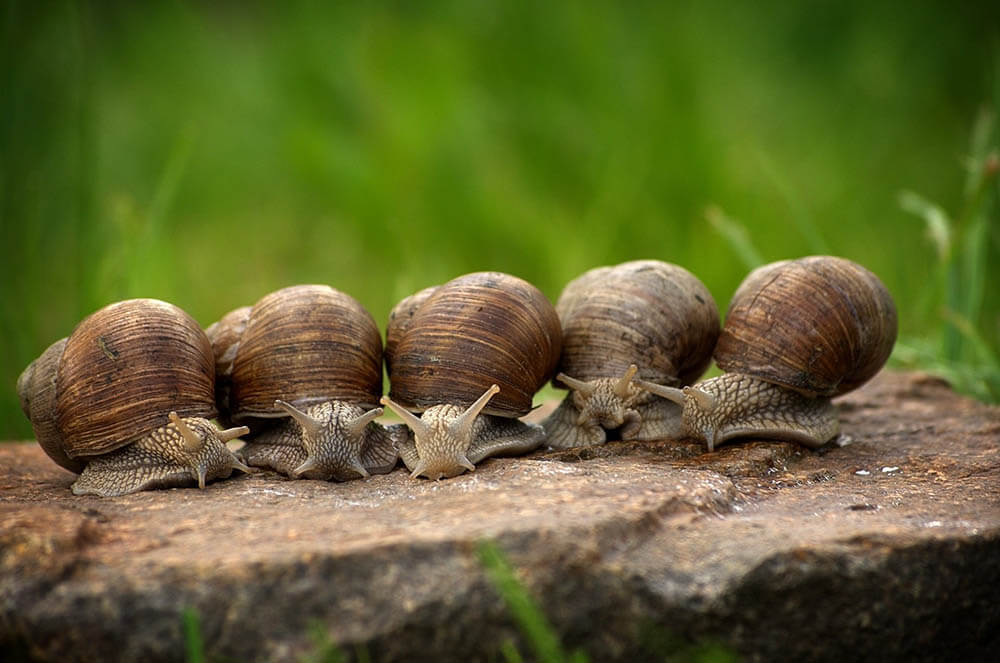
What About the Other Types of Snails?
As mentioned above, there are three types of snails: land snails, freshwater snails, and sea snails.
While most pet snails are land snails, there are people who keep freshwater and saltwater snails.
So what do freshwater and saltwater snails eat?
The freshwater snail diet
Freshwater snails are predominantly herbivores. As such, they typically eat decomposing plants and algae, though some species also consume dead fish.
Here’s a list of the foods you can feed your freshwater snail:
- Aquatic plants (dead plant matter is preferred to living plants)
- Algae
- Fruits such as pears, apples, pumpkins, melons, and grapes
- Vegetables such as snap peas, carrots, and lettuce
You can also buy commercially prepared freshwater snail food at pet stores.
Freshwater snails are extremely popular additions to aquarium tanks, as they usually adapt quickly to such habitats and learn to co-exist peacefully with fish. Many breeds are efficient at removing algae that naturally occurs in tanks. They also clean said tank of the food scraps that collect at its base.
These snails multiply rapidly, however, so make sure to keep their numbers in check lest they overrun their tank.
The saltwater snail diet
Also known as sea or marine snails, saltwater snails also feed on plant matter such as algae. In addition, they consume animal matter including fish and various kinds of invertebrates.
Some sea snails are carnivorous and will only focus on meat. Others are scavengers and will eat any food they happen upon.
If your pet saltwater snail primarily eats plants, give it saltwater plants, and don’t remove any tank algae so your pet can eat it. If your snail is carnivorous, feed it bivalves such as scallops, brine shrimp, fish, and similar prey.
Saltwater snails also feed on wafers, sinking pellets, and saltwater snail food sold at pet stores.
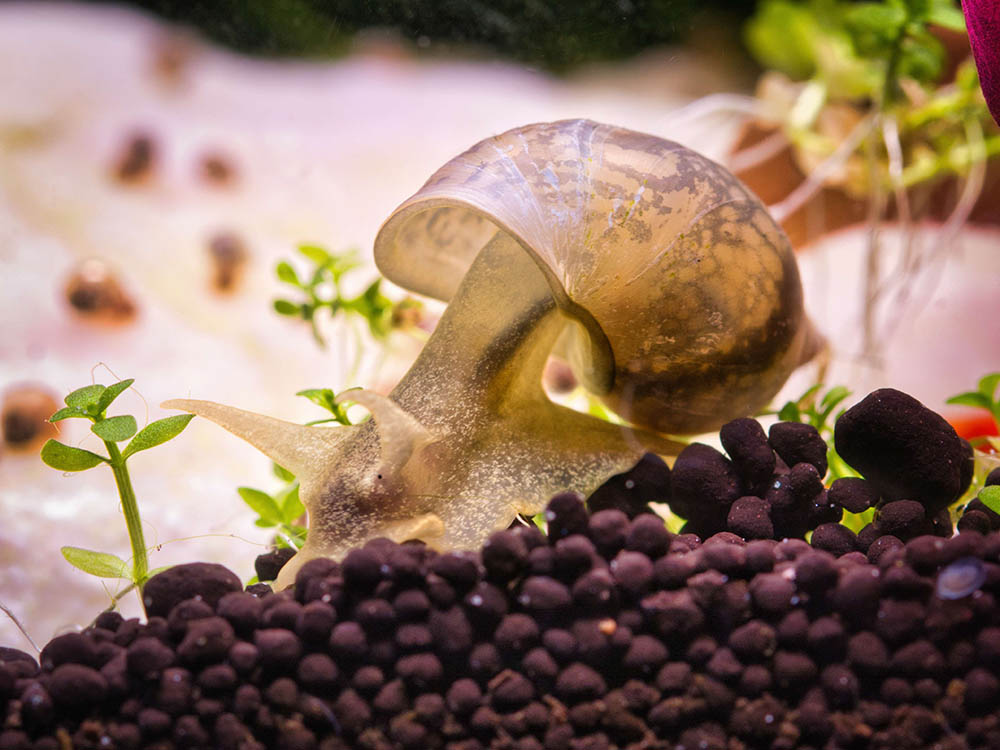
FAQs About Pet Snails
It’s time to answer some frequently asked questions about pet snails!
Is it legal to own a snail?
Yes! However, there are some snail species that you can’t legally own in the U.S. For instance, the U.S. prohibits the keeping giant African land snails as pets, as these are an invasive species that can wreak havoc on crops.
Don’t try importing a snail from another country before checking your state’s laws regarding which species you’re allowed to have as a pet.
How long do snails live?
In captivity, snails can live up to 25 years. Wild snails typically live up to 10 years.
What is the best kind of snail to keep as a pet?
Garden snails are among the most sought-after snails among pet lovers. These can grow up to 1.5 inches long.
Orthalicus tree snails are also quite popular. They’re quite large, with some reaching over 2 inches in length.
Check your state’s laws and regulations to find out what other types of snail species you can own.
Are garden snails hermaphrodites?
Yes, garden snails have both female and male gametes, which makes them hermaphrodites.
In general, garden snails engage in sexual reproduction. However, an individual can also fertilize itself.
Garden snails lay dozens of eggs around 6 times annually. They then hide these eggs beneath the soil or under rocks or stones.
How do snails differ from slugs?
The main difference between a slug and a snail is that the former doesn’t have a shell whereas the latter does.
Slugs move slower than snails.
A slug can easily squeeze into shelter when required. A snail, on the other hand, retreats into its shell at any sign of danger.
Both snails and slugs belong to a class of animals known as Gastropoda. This is why both creatures are known as gastropods.
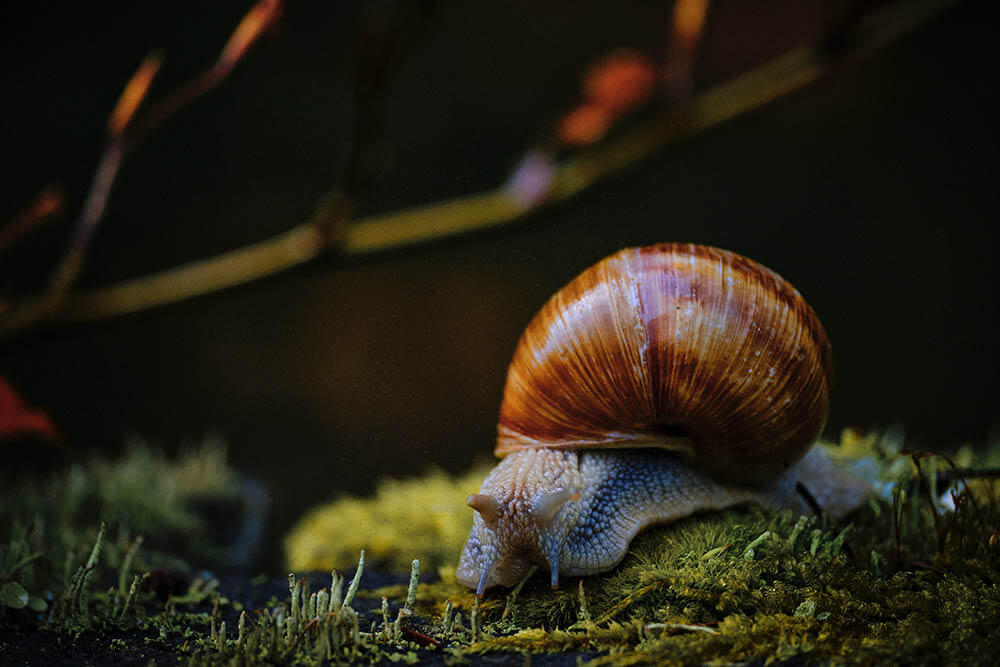
Conclusion
One of the reasons snails are low-maintenance pets is the fact that it’s easy to feed them. They don’t eat a lot, and the foods they enjoy are easy to find in supermarkets, groceries, and pet stores.
If your pet is a land snail, its diet should mostly consist of a rich assortment of vegetables and fruits. Freshwater snails dine on algae and plants. Saltwater snails also feed on algae but prefer dead plant matter, with some species preying on small fish, shrimp, and bivalves.
Whatever your choice of pet snail is, make sure to feed them the appropriate foods to keep them happy and healthy.
